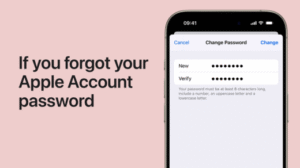Trading cryptocurrencies can be a thrilling adventure, especially when you’re aiming to maximize profits and minimize losses. But one of the biggest challenges traders face is slippage – the difference between the expected price of a trade and the price at which it is actually executed. Slippage can eat into your profits or exacerbate your losses, so it’s crucial to understand how to trade crypto with low slippage. Let’s dive into some practical strategies and insights to help you navigate the crypto markets more effectively.
First things first, let’s talk about what slippage is and why it matters. When you place an order to buy or sell a cryptocurrency, the price can change rapidly before your order is filled. This is especially true in volatile markets, where prices can swing wildly in a matter of seconds. Slippage occurs when the price at which your order is executed is different from the price you expected. This can happen for a variety of reasons, including high market volatility, low liquidity, or even technical issues with the exchange.
Now, let’s look at some strategies to minimize slippage. One of the most effective ways to reduce slippage is to use limit orders instead of market orders. With a limit order, you set a specific price at which you want to buy or sell a cryptocurrency. This can help you avoid the pitfalls of market orders, which execute at the current market price and can result in higher slippage due to rapid price fluctuations.
Another strategy to consider is to trade during less volatile market hours. Cryptocurrency markets are open 24/7, but they tend to be less volatile during certain times of the day. By trading during these periods, you can reduce the likelihood of slippage occurring. Additionally, it’s important to monitor market news and events that could impact the price of the cryptocurrencies you’re trading. Staying informed can help you anticipate potential price movements and adjust your trading strategy accordingly.
Crypto Insight: Understanding Market Dynamics
One of the keys to trading with low slippage is having a solid understanding of market dynamics. Crypto Insight can provide you with valuable information about market trends, trading volumes, and price movements. By using Crypto Insight tools, you can gain a deeper understanding of the market and make more informed trading decisions. These tools can help you identify patterns, spot opportunities, and avoid potential pitfalls.
Liquidity and Slippage: A Close Relationship
Liquidity is another critical factor when it comes to minimizing slippage. In a liquid market, there are plenty of buyers and sellers, which means that orders can be executed quickly and at the desired price. However, in a less liquid market, it can be more difficult to find a counterparty to fill your order, which can lead to higher slippage. To mitigate this, you can look for cryptocurrencies with higher trading volumes and tighter spreads. These tend to be more liquid and can offer better execution prices.
Trading Pairs and Slippage: A Strategic Approach
When it comes to trading pairs, there are a few things to keep in mind. First, consider the base and quote currencies involved in the pair. Some pairs are more liquid than others, which can impact slippage. For example, trading a major cryptocurrency like Bitcoin against a stablecoin like USDT is generally less prone to slippage than trading a less popular altcoin against a major currency. Additionally, consider the volatility of the cryptocurrencies in the pair. Pairs with higher volatility can be more susceptible to slippage.
Order Book Analysis: A Key to Minimizing Slippage
Analyzing the order book can provide valuable insights into potential slippage. The order book shows the current buy and sell orders for a cryptocurrency, which can help you gauge the liquidity of the market and the potential for slippage. By examining the order book, you can identify areas where there are large gaps between buy and sell orders, which can indicate higher slippage risk. This information can help you make more informed decisions about when and how to place your trades.
Crypto Insight: Tools for Order Book Analysis
Using Crypto Insight tools, you can analyze the order book in more detail. These tools can provide you with a visual representation of the order book, making it easier to identify trends and potential slippage points. By leveraging these tools, you can make more strategic decisions about your trades and reduce the likelihood of slippage.
Stop Loss Orders: A Slippage Safety Net
One way to protect yourself from slippage is to use stop loss orders. A stop loss order automatically closes your position when the price reaches a certain level, which can help limit your losses in case of unexpected price movements. While stop loss orders can’t eliminate slippage entirely, they can provide a safety net to help minimize the impact of slippage on your trades.
Crypto Insight: Risk Management Strategies
Risk management is a crucial aspect of trading, and Crypto Insight can offer you strategies to manage your risk effectively. By understanding your risk tolerance and setting appropriate stop loss levels, you can protect your portfolio from significant losses due to slippage. Crypto Insight tools can help you monitor your positions and adjust your risk management strategies as needed.
Conclusion: Mastering Low Slippage Trading
Trading cryptocurrencies with low slippage is a skill that requires practice, patience, and a deep understanding of market dynamics. By using strategies like limit orders, trading during less volatile hours, and leveraging Crypto Insight tools, you can minimize slippage and improve your trading outcomes. Remember, the key to successful trading is not just about making profits, but also about managing risks effectively. With the right approach and the right tools, you can navigate the crypto markets with confidence and minimize the impact of slippage on your trades.





